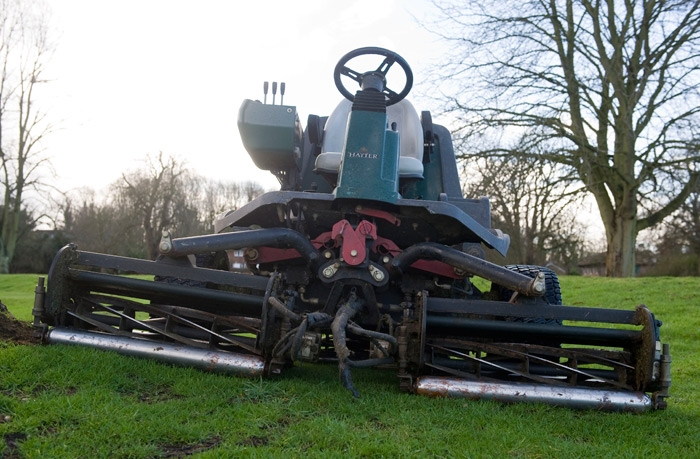Mowing the Outfield
The aim of mowing the outfield is to provide a smooth, consistent surface which offers good ball roll and rewards stroke play with fair scoring. A sluggish or uneven outfield offers poor enjoyment for those playing and watching the game and hampers the skills of the fielders and the batters alike.
The most appropriate cutting height will depend on the grass types, available equipment, the prevailing weather conditions, and the surface levels. Very high-quality outfields are often mown in the region of 10 to 12mm (or sometimes even shorter), but without suitable irrigation this would be completely unsustainable for many clubs.
In general, a height of cut of 12 to 15mm will provide a quick enough surface, but that is not to say that a height of cut of around 18mm would not work well in the right circumstances, particularly when approaching periods of drought stress. Cutting heights much above 18mm may be perceived to be too long by players and may not provide good ball roll.
Grass clippings may compromise ball roll and can look unsightly so these should either be removed during the mowing process or dispersed in some way. When reducing mowing heights in spring, this should be done gradually, especially where clippings are not being removed and might leave large clumps off grass behind, which are difficult to disperse. It is not always necessary or indeed desirable to remove clippings, so long as mowing occurs frequently, and the clippings are small.
Clumps of clippings should never be allowed to sit on the surface because they will damage the grass underneath. Removing clippings may increase fertiliser needs by up to 25%. Furthermore, removing grass clippings does not necessarily reduce the accumulation of thatch in an outfield because the population of thatch eating fauna will be proportionately reduced, however, worm populations may proliferate in situations where large volumes of clippings are being returned.
If your outfield is maintained by contractors or the local council them make sure that you have active discussions about what cricket needs with regards to mowing heights, mowing frequency, and mowing finish so that they can plan work, accordingly, select the correct machines and that the operators know what is required ahead of time. Agree the level and terms of service in writing.
Whilst presentation is not a vital element of play, good presentation demonstrates pride in the ground and greatly enhances the experience for the player and spectator alike.
Although fertiliser on the outfield is not as important as on the square, since it does not receive the same intensity of wear, fertilisation will greatly improve the quality of the surface. Applying appropriate amounts of fertiliser at the appropriate times of year will significantly increase the density of the turf and the presentation of the turf. It will also help the turf to recover from damage and stress. Denser turf will help to prevent moss and weed invasion.
Fertiliser will, however, increase the rate of growth and therefore mowing frequency, and consideration should be given to this where the time spent on a ground is limited.
Benefits
• Clean cutting of the grass plants results in a healthy sward
• Correct cutting height reduces the stress on the grass plant
• Good ball roll across the outfield increases the enjoyment of the players
• Improves presentation, which is the first thing that officials and visitors see
Practical Tips
• Always perform pre-start checks on the mower
• Familiarise yourself with the user’s manual, follow all safety information and safe working practices
• If you listen to the radio or music when mowing, it is essential that you keep the volume low enough to be able hear the machine, as well as anyone who may need to attract your attention.
• Check the cut on the mower before use and if necessary, adjust. A badly set mower will damage the grass plant, potentially damage the mower, or create excessive wear on parts, not to mention leaving an unsatisfactory finish.
• Never mow in wet conditions as this will leave a poor finish and may damage the soil structure, surface levels and surface drainage.
• Reverse the direction of cut regularly to avoid creating too much of a nap, or from preventing creeping grasses from forming long above ground stolon trails.
• Clean the mower immediately after use and maintain it regularly.



 Tweet
Tweet